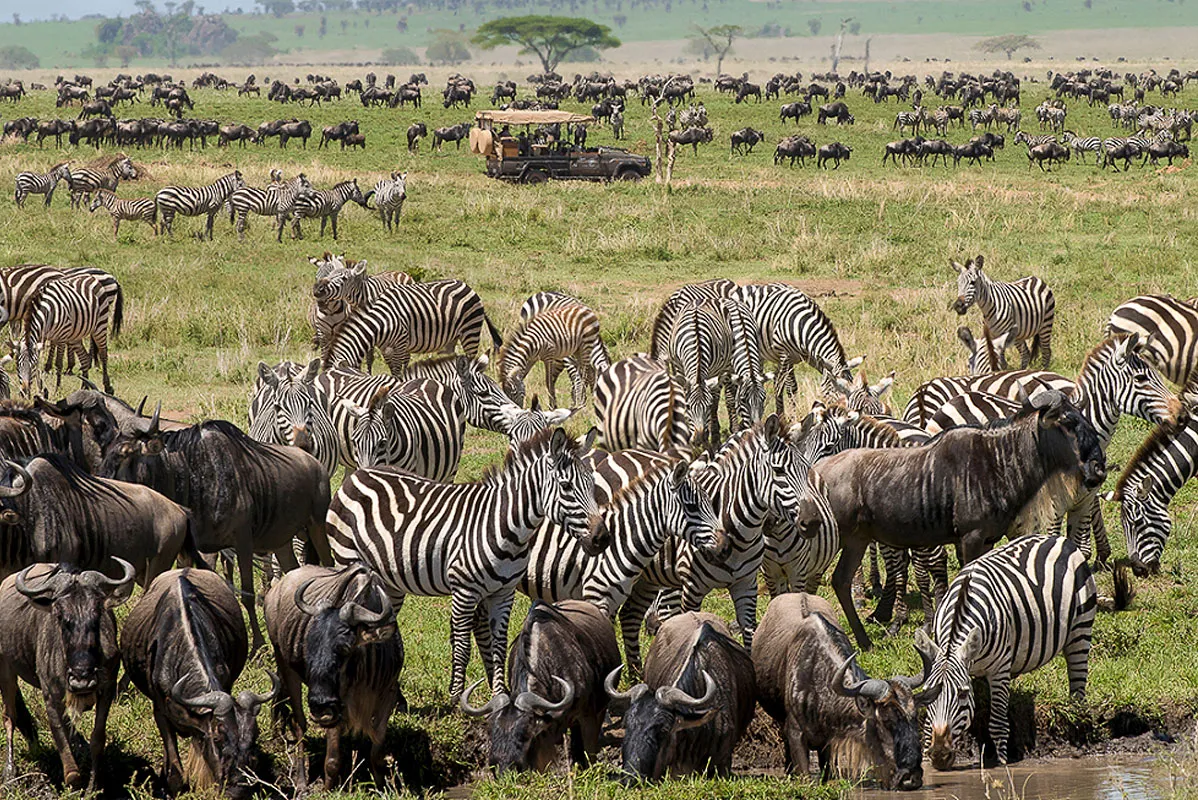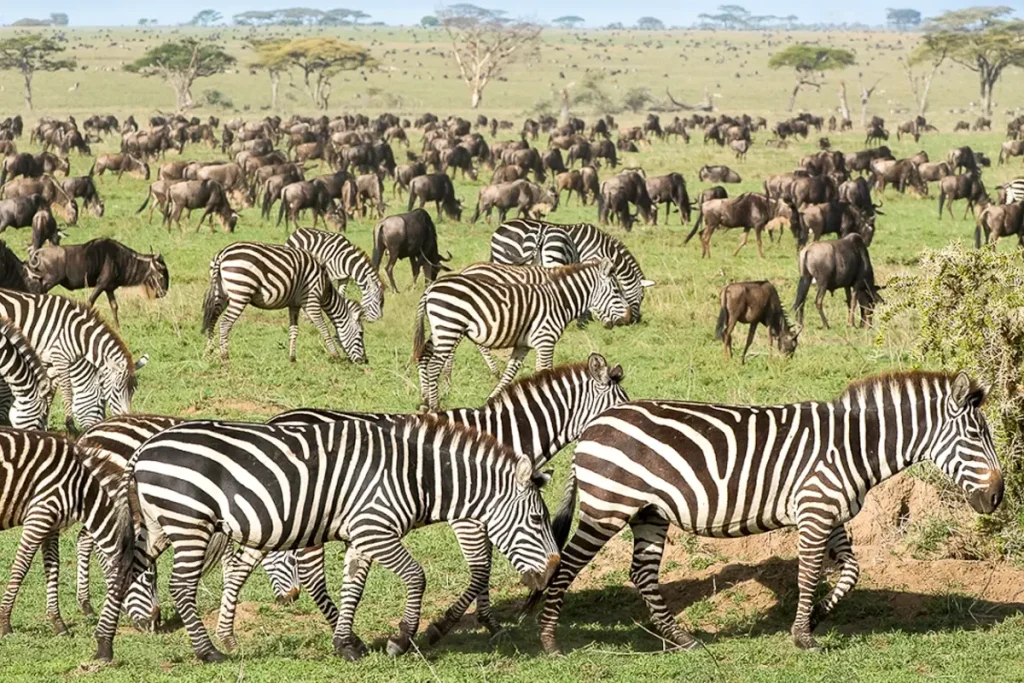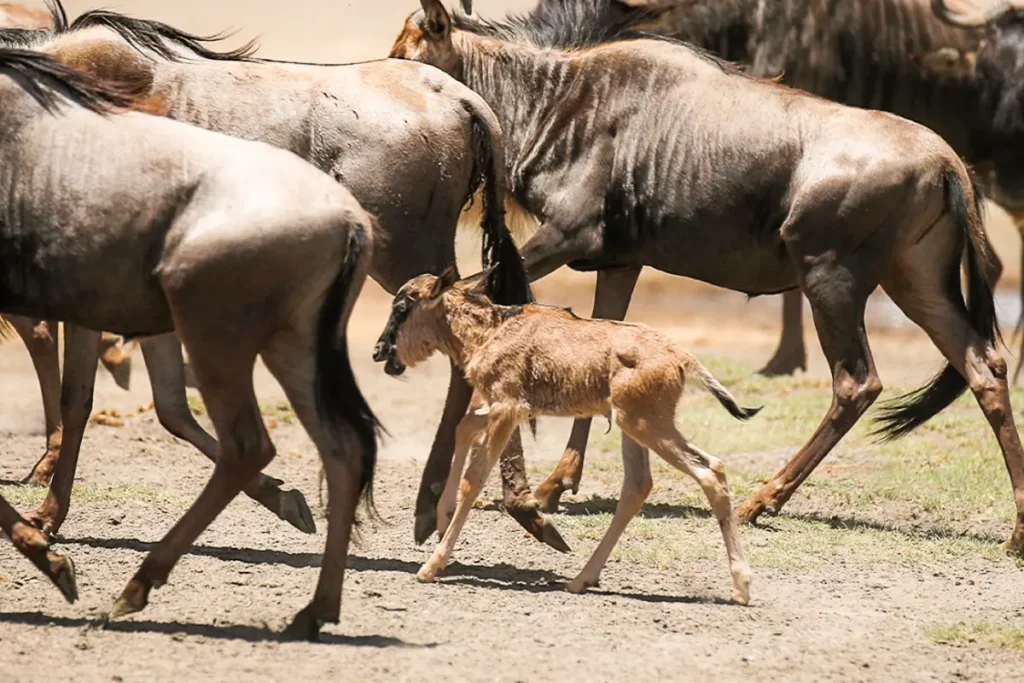
Can you imagine hearing this in your head from the moment you are born and every day since then for the rest of your life?
Sounds crazy right?
But then again, “crazy” might just be the perfect word to describe how it feels like to witness the phenomenon that is the annual Great Wildebeest Migration — wondrously, wildly, unbelievably and life-changingly crazy.

Hailed as one the seven natural wonders of Africa, the Great Migration is a never-ending search for a steady supply of food and water. So wherever the herds may be, once the dry season begins and the grass starts turning yellow, the mass exodus will soon follow.

Over 1.5 million wildebeests, 200,000 zebras and a multitude of various antelopes comprise the majority of the mega herds, making it the largest terrestrial migration in the world. And as they traverse the migration path together, what makes these solid and striped- coloured animals such compatible travel partners is the fact that they prefer eating different parts of the same type of grass that they find along the way. To each, eats own indeed!

Covering more than 800km (500miles) across plains, rivers and various terrains between Kenya and Tanzania, these mega herds “run with the rains” non-stop. Along the way, they face perilous obstacles and challenges ranging from predators, raging rivers, hunger and sheer utter exhaustion. And in the course of their journey, around 250,000 wildebeest and 30,000 zebras perish.

A vast portion of this journey happens within the Serengeti National Park, which has the oldest ecosystem in the planet and is famous for its rich and dense number of resident wildlife. And with more than 3,000 lions currently living in the Serengeti, the park is also one of the places where a great number of the migrating animals find their journeys’ end, while half a million newborn wildebeests begin theirs.

To know more about the Great Migration experience with One Nature Nyaruswiga, or visit onenaturehotels.com.